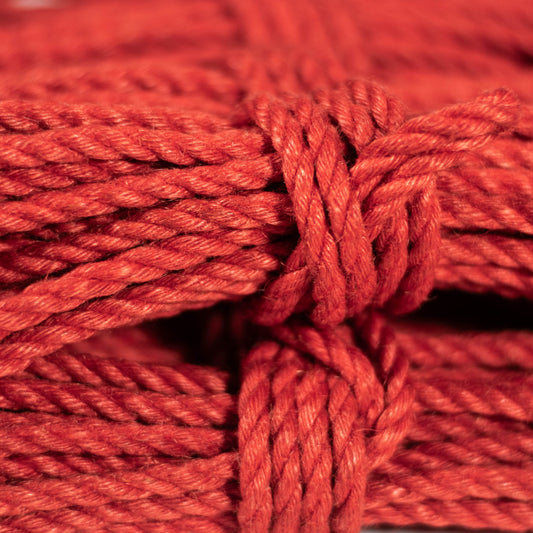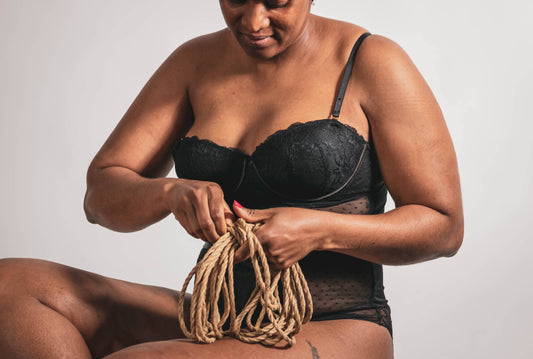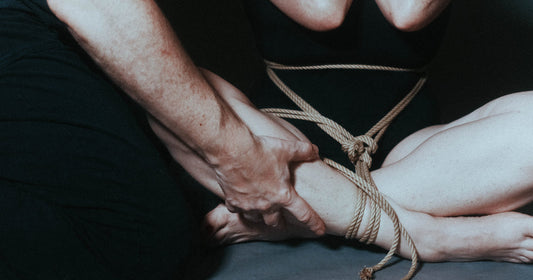Raw ropes can be difficult and even painful to tie with (for both partners), and it is for this reason that people prefer to buy ropes that have already been processed and treated. Ropes can be 'wet treated' or 'dry treated', but in order to wet treat ropes properly the ropes must be dried under tension or they become so bendy that they are basically unusable for shibari. Because this process involves a lot of time and space, many people prefer to 'dry treat' their ropes. This usually involves a process of breaking in the ropes by rubbing it against itself to make the fibres more pliable, singeing the ropes over a flame to burn away the fuzzies, and rubbing waxy pastes or oils into the ropes.
The treatment process is not 'necessary' for the ropes, but it does make the ropes more user friendly and your fingers might appreciate you. The treatment process mimics the natural breaking in process that the ropes would undergo by simply tying with the ropes over time - which some experienced rigger choose to do.
The wax used in usually a mix of beeswax blended with either camellia or jojoba oil. Ropes can be treated without beeswax, especially if you're vegan, or if you prefer lighter ropes, then you can simply use camellia or jojoba. Camellia is cheaper and more watery than jojoba, jojoba is more expensive and is effectively a liquid wax. We like to blend the two together for our perfect finish.
We treat the ropes for sale the same way we treat our own personal ropes, so we know you'll have a great quality rope in your hands.
Here's a breakdown of how you can treat them at home:
Step one: if the ropes are very stiff, you might want to break them in by frictioning them against themselves - for example, by running them through a carabiner, twisting them around each other and moving them back and forth to 'break' the fibers up a bit.
Step two: they'll be vey fuzzy after this, so you'll need to singe the ropes by burning over a flame
Step three: wipe the ropes to get rid of any soot and get rid of twists in the rope
Step four: put lube (oil) and/or goo (paste) on the ropes in small consecutive layers. You can use a microfibre cloth to make the process cleaner.
Step five: hang the ropes and let them breathe and straighten
Step 6: tie with them a lot!
We hope you found this informative! For any questions email us at anatomie.studio@gmail.com.





